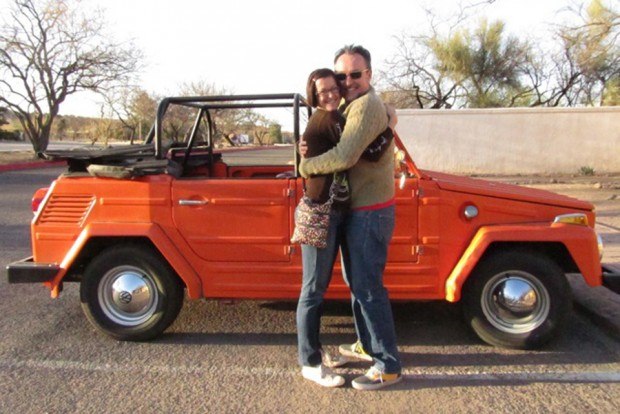Germans call it a “Kurierwagen,” the British, a “Trekker.” In Mexico, it’s a “Safari,” but in the United States, it’s a “Thing.” It’s hard to put the Thing in the same category as the Hummer, but both have military ancestry.
Germans call it a “Kurierwagen,” the British, a “Trekker.” In Mexico, it’s a “Safari,” but in the United States, it’s a “Thing.”
It’s hard to put the Thing in the same category as the Hummer, but both have military ancestry. During World War II, the German version of the Jeep was a VW-based “Kubelwagen,” meaning “bucket car” to the Deutsche.
While European governments were developing lightweight, amphibious four-wheel drive military vehicles, Germany still wanted a lightweight, inexpensive and reliable vehicle to meet basic needs. Noting the popularity of VW-based dune buggies in the U.S., Germany proceeded to develop the Thing. The Volkswagen management team believed the Thing would appeal to the consumer market as well, just as the Jeep became popular after World War II.
The Thing is based on a Karmann Ghia floorpan, which is slightly wider than the Beetle. At first, the rear suspension was that of a VW Transporter until 1973, when the Porsche double-jointed axel and IRS (independent rear suspension) semi-trailing arm design was adopted.
In 1971, the Thing was introduced in Europe and Mexico; the following year, in the U.S.
When the U.S. Department of Transportation imposed stricter safety standards in 1975, the U.S. sales of the Thing were brought to a screeching halt. That same year, a right-hand-drive version was offered in Britain, but the British weren’t very interested in it.
The concept lived on as the “Acapulco Thing,” a vehicle designed for the Las Brisas Hotel in Acapulco. The Acapulco had special upholstery, running boards, surrey top, and striped paint job in white with orange, yellow, green or blue.
During its lifetime (1969-83), 90,883 Things were built in Germany, and later, in Mexico.
Noel Kuehner and Bonnie Ritter are the second owners of this orange 1973 VW Thing.
In 39 years, the car has only logged 76,000 miles. It started life along the Sea of Cortez in Puerto Peñasco, Mexico. A friend, Gary, had a VW shop there and he kept hounding the owner to sell him the Thing.
He eventually gave in, but by that time Gary had moved on to Porsches and Mercedes. In 2004, Noel happened to drive by the Stuttgart Autohaus where Gary had it parked. It was in amazingly good condition, though sun-faded. Noel inquired about the vehicle.
As soon as Noel’s wife, Bonnie, saw the car, she packed a picnic lunch and took the Thing for a test drive.
It was love at first sight.
The couple bought the car. The night before they were to put this pumpkin orange example of German engineering on a Matson container bound for Nawiliwili, it caught on fire.
Clad only in his underwear, Noel was able to quickly extinguish the blaze, while entertaining the neighbors. It turned out to be a blessing in disguise, as it created an opportunity to have the guys at Vanderpool put on a fresh coat of paint on the faded finish. Now, it looks better than new.
The Thing is driven almost daily; it’s a perfect island car.
The surrey top, an option that became available on the 1974 model, gives the owners shade, no matter where they park.
It’s a cruiser and a rock crawler. People give a “shaka” and a smile wherever they go. People warn them that the Thing will go to rust, but the owners say, “it couldn’t happen in a better place.”
Noel and Bonnie enjoy hanging out with Darryl Borrero and other VeeDubbers in the Kaua’i Air-Cooled VW Club.
People often ask, “Does it float?” Noel responds, “Yes, just for a second, right before it sinks.”


